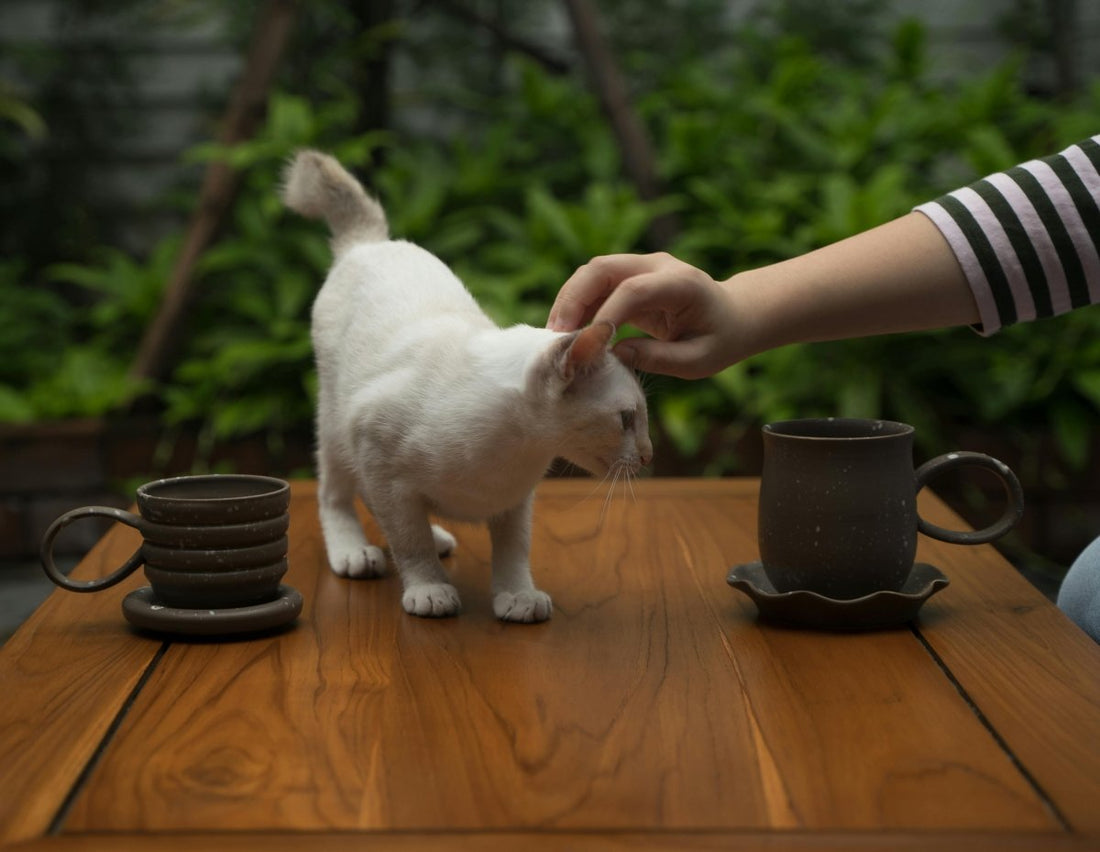
Purr-fect Petting: 15 Tips on How to Pet a Cat
Share
Petting a cat is one of life's simple pleasures, but knowing how to do it properly can enhance the experience for both you and your feline friend. Cats are sensitive creatures with unique preferences when it comes to touch. Follow these 15 tips on how to pet a cat and watch your bond with your furry friend grow stronger.
1. Start Slowly:
Allow the cat to approach you first. Extend a hand and let them sniff it to get comfortable with your presence before attempting to pet them.
2. Focus on the Head and Neck:
Cats generally enjoy being petted around the head and neck area, including behind the ears and under the chin. These areas often elicit purrs of contentment.
3. Avoid the Belly:
While some cats may allow belly rubs, most are sensitive in this area and may react defensively if you try to touch their stomach. Stick to safer areas to avoid upsetting them.
4. Use Gentle Strokes:
Use slow, gentle strokes when petting your cat. Avoid applying too much pressure, especially in sensitive areas.
5. Pay Attention to Body Language:
Observe your cat's body language to gauge their comfort level. If their ears flatten, tail twitches, or they move away, stop petting them.
6. Let Them Guide You:
Let your cat guide the interaction by leaning into your touch or moving away when they've had enough. Respect their boundaries and preferences.
7. Use the Right Touch:
Cats enjoy being scratched with a soft, gentle touch. Use your fingertips or an open palm for a soothing experience.
8. Pet with Care:
Be mindful of your cat's fur and skin. Avoid pulling their fur or causing any discomfort with your touch.
9. Incorporate Grooming:
Brushing your cat can be a form of petting they enjoy. It helps remove loose fur and keeps their coat healthy, all while providing a soothing sensation.
10. Avoid Overstimulation:
Watch for signs of overstimulation, such as biting, scratching, or growling. If your cat shows any of these behaviours, give them space.
11. Pet in Short Sessions:
Cats often prefer shorter petting sessions rather than long, drawn-out interactions. Keep it brief and sweet to maintain their interest.
12. Respect Personal Space:
Some cats prefer their alone time and may not always want to be petted. Respect their need for space and wait for them to come to you.
13. Avoid Petting While Eating:
Cats can be protective of their food and may not appreciate being petted while eating. Give them privacy during mealtimes.
14. Provide Treats:
Rewarding your cat with treats during petting sessions can reinforce positive associations and make the experience more enjoyable for them.
15. Pet at Their Level:
Sit or kneel to be at eye level with your cat while petting them. This makes the experience less intimidating and allows for better connection.
By following these 15 tips, you can create a positive petting experience for your cat that fosters trust and affection. Take the time to learn your cat's preferences and respect their boundaries to strengthen your bond and keep them purring with contentment!
1. Start Slowly:
Allow the cat to approach you first. Extend a hand and let them sniff it to get comfortable with your presence before attempting to pet them.
2. Focus on the Head and Neck:
Cats generally enjoy being petted around the head and neck area, including behind the ears and under the chin. These areas often elicit purrs of contentment.
3. Avoid the Belly:
While some cats may allow belly rubs, most are sensitive in this area and may react defensively if you try to touch their stomach. Stick to safer areas to avoid upsetting them.
4. Use Gentle Strokes:
Use slow, gentle strokes when petting your cat. Avoid applying too much pressure, especially in sensitive areas.
5. Pay Attention to Body Language:
Observe your cat's body language to gauge their comfort level. If their ears flatten, tail twitches, or they move away, stop petting them.
6. Let Them Guide You:
Let your cat guide the interaction by leaning into your touch or moving away when they've had enough. Respect their boundaries and preferences.
7. Use the Right Touch:
Cats enjoy being scratched with a soft, gentle touch. Use your fingertips or an open palm for a soothing experience.
8. Pet with Care:
Be mindful of your cat's fur and skin. Avoid pulling their fur or causing any discomfort with your touch.
9. Incorporate Grooming:
Brushing your cat can be a form of petting they enjoy. It helps remove loose fur and keeps their coat healthy, all while providing a soothing sensation.
10. Avoid Overstimulation:
Watch for signs of overstimulation, such as biting, scratching, or growling. If your cat shows any of these behaviours, give them space.
11. Pet in Short Sessions:
Cats often prefer shorter petting sessions rather than long, drawn-out interactions. Keep it brief and sweet to maintain their interest.
12. Respect Personal Space:
Some cats prefer their alone time and may not always want to be petted. Respect their need for space and wait for them to come to you.
13. Avoid Petting While Eating:
Cats can be protective of their food and may not appreciate being petted while eating. Give them privacy during mealtimes.
14. Provide Treats:
Rewarding your cat with treats during petting sessions can reinforce positive associations and make the experience more enjoyable for them.
15. Pet at Their Level:
Sit or kneel to be at eye level with your cat while petting them. This makes the experience less intimidating and allows for better connection.
By following these 15 tips, you can create a positive petting experience for your cat that fosters trust and affection. Take the time to learn your cat's preferences and respect their boundaries to strengthen your bond and keep them purring with contentment!
